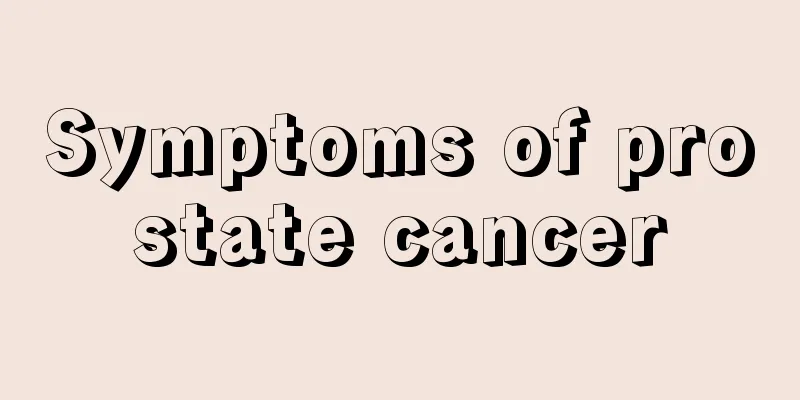Symptoms of prostate cancer

|
At present, prostate cancer has no obvious symptoms at the beginning, or even no symptoms at all, so that when you finally feel the symptoms, the disease has already developed to the advanced stage. For this situation, the best way is to have regular physical examinations. The following is an introduction to the symptoms of prostate cancer: 1. Local enlargement of the tumor If the prostate tumor progressively enlarges locally and compresses the prostate urethra, symptoms of prostate cancer may include urination disorders, such as progressive dysuria, frequent urination, urgency, pain, and a feeling of incomplete urination. In severe cases, urine dripping and urine retention may occur. These symptoms are similar to those of benign prostatic hyperplasia (BpH), which can easily lead to misdiagnosis and missed diagnosis, delaying early diagnosis and treatment of the disease. 2. Prostate cancer metastasis When prostate cancer metastasizes to the bones, it can cause bone pain at the metastatic site, which is also a common symptom of prostate cancer. Common sites of bone metastasis include the spine, hip bones, ribs, and shoulder blades. About 60% of advanced patients experience bone pain, which is common in the waist, sacrum, buttocks, hip pelvis. Bone pain has different manifestations. Some patients may experience persistent pain, while some patients experience intermittent pain. Bone pain can be limited to a specific part of the body, or it can manifest as migratory pain in different parts of the body; bone pain may vary at different times of the day and respond differently to rest and activity. 3. Advanced prostate cancer For advanced prostate cancer, symptoms of prostate cancer may include fatigue, weight loss, body pain, etc. Because the pain seriously affects diet, sleep and mental state, after long-term torture, the whole body condition becomes weaker and weaker, and anemia progresses, and eventually the whole body fails and cachexia occurs. The above are the symptoms of prostate cancer. The earlier the treatment is, the easier it is to cure. In the early stage of treatment, the lesion has not spread yet and can be cured. If it is in the middle or late stage, the tumor has spread, and the treatment is only to slow down the spread, then there is basically no possibility of cure. |
<<: What are the symptoms of late-stage prostate cancer
>>: Drinking 300 ml of beverage a day increases the risk of prostate cancer by 40%
Recommend
How to remove the odor from smelly shoes?
People usually wear all kinds of shoes. In winter...
Only those who meet the ten criteria are considered healthy
In modern society, many people are in a state of ...
Will fibroids grow bigger if you touch them? Touching will not affect the normal growth of fibroids
Fibroids are a relatively common tumor, but most ...
Dizziness after blood draw
If you feel dizzy after having your blood drawn, ...
What causes arteriosclerosis?
To prevent arteriosclerosis, we need to have a sc...
Can corn and pear be eaten together
Corn is a common coarse grain in daily life. Eati...
Symptoms before death from advanced lymphoma
Lymphoma brings a lot of harm to everyone in real...
Diagnostic criteria for bronchogenic lung cancer
Lung cancer is a type of cancer, and this disease...
What is the normal ear temperature?
Under normal circumstances, the body temperature ...
Who are the people who are susceptible to gastric cancer
Gastric cancer is simply a cancer that occurs in ...
Thyroid ultrasound angiography
In today's society, more and more people suff...
How to control nosebleed
We have all had nosebleeds since childhood. Child...
Bladder cancer and genetic environment are both related. What should we do to prevent bladder cancer?
Bladder cancer is a type of cancer. The harm of b...
What are the symptoms of teratoma in life
Teratoma is a relatively rare disease. For many p...
What are the nursing methods for advanced lung cancer
Nursing is very important for the treatment of pa...









